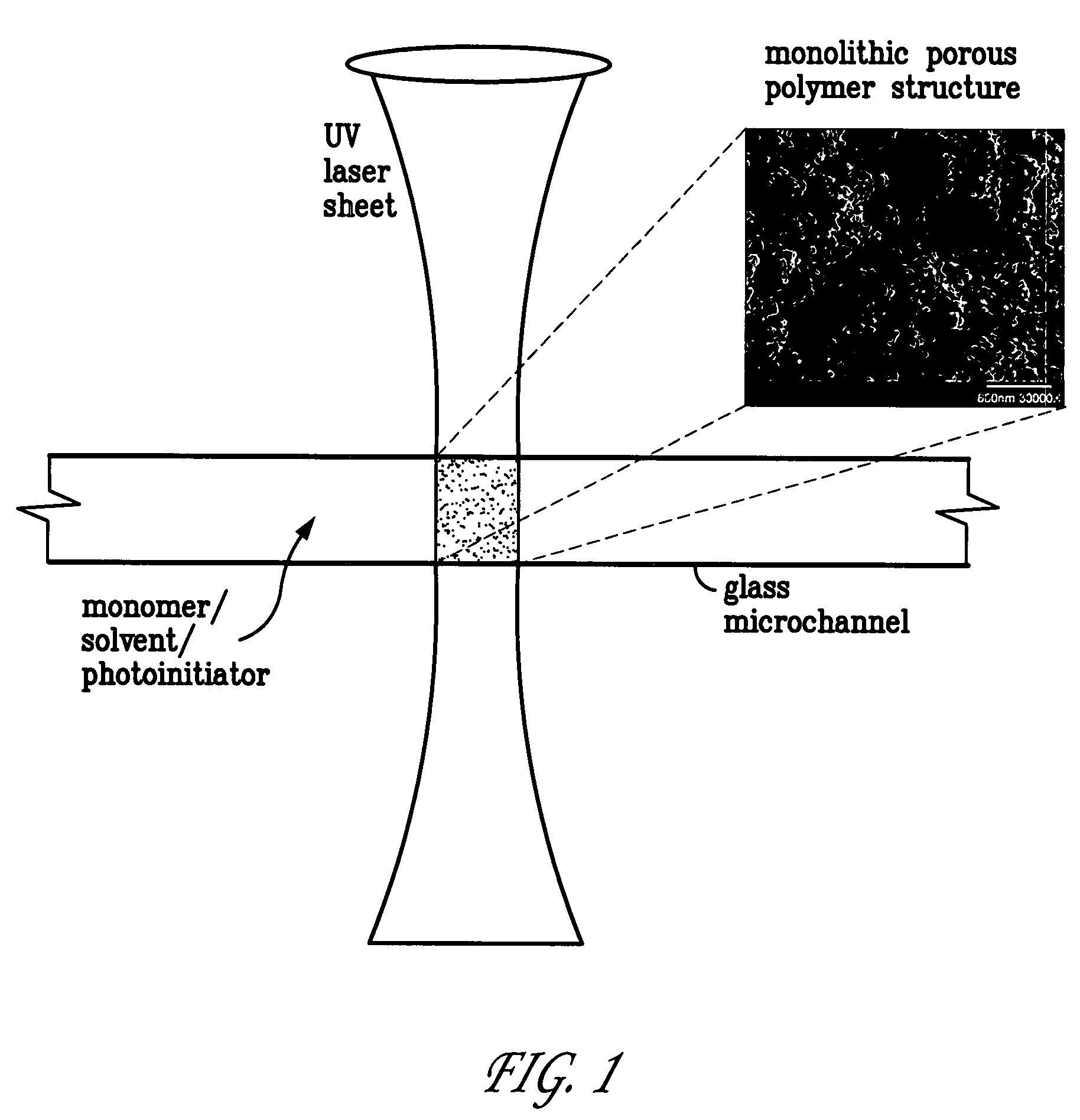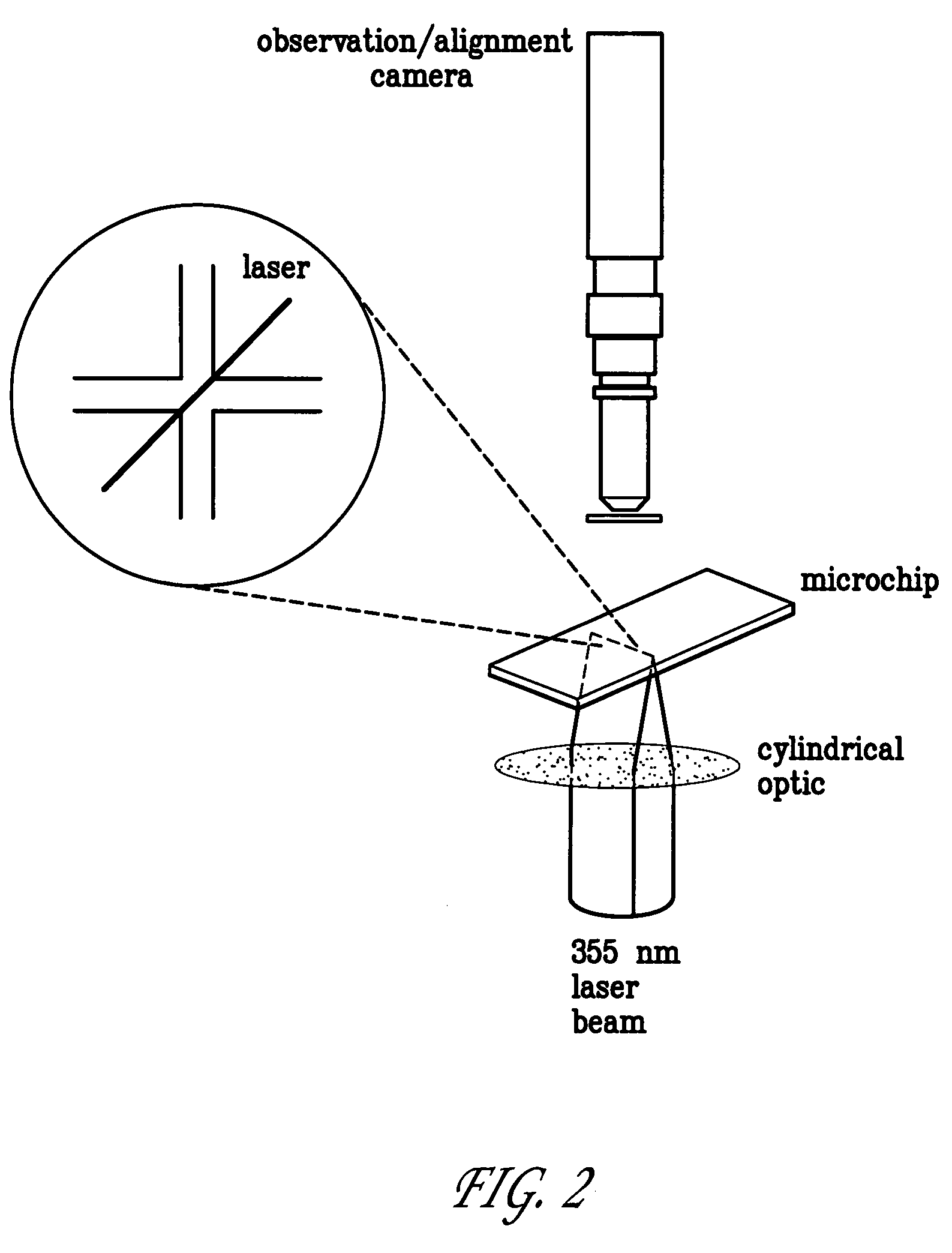Method for dialysis on microchips using thin porous polymer membrane
a polymer membrane and microchip technology, applied in the field of dialysis, can solve the problems of difficult integration and automation, complex operation, and high cost, and achieve the effects of reducing handling loss, prolonging analysis times, and operating complex
- Summary
- Abstract
- Description
- Claims
- Application Information
AI Technical Summary
Benefits of technology
Problems solved by technology
Method used
Image
Examples
Embodiment Construction
[0027]The present embodiment consists of a means for dialyzing species in a micro-channel device that is based on the species' size. Utility is achieved by polymerizing a thin porous polymer membrane across a channel intersection within the microchannel device. A membrane of about 0.5 μm to about 20 μm in thickness can be used for this purpose. Because the shape and thickness of the membrane is controlled primarily by a UV light beam used to initiate a polymerization reaction in a solution contained within a microchannel, control of the excitation light beam focus and collimation can be used to control the membrane thickness. The thickness of the membrane is also negatively affected by photo-initiated radical diffusion, solvent-phase polymer diffusion, and bulk fluid motion within the fluid microchannel. These factors can be controlled by eliminating bulk fluid flow before initiating polymerization, and by the incorporation of polymerization inhibitors to minimize radical diffusion....
PUM
| Property | Measurement | Unit |
|---|---|---|
| concentration | aaaaa | aaaaa |
| size | aaaaa | aaaaa |
| size | aaaaa | aaaaa |
Abstract
Description
Claims
Application Information
 Login to View More
Login to View More - R&D
- Intellectual Property
- Life Sciences
- Materials
- Tech Scout
- Unparalleled Data Quality
- Higher Quality Content
- 60% Fewer Hallucinations
Browse by: Latest US Patents, China's latest patents, Technical Efficacy Thesaurus, Application Domain, Technology Topic, Popular Technical Reports.
© 2025 PatSnap. All rights reserved.Legal|Privacy policy|Modern Slavery Act Transparency Statement|Sitemap|About US| Contact US: help@patsnap.com



